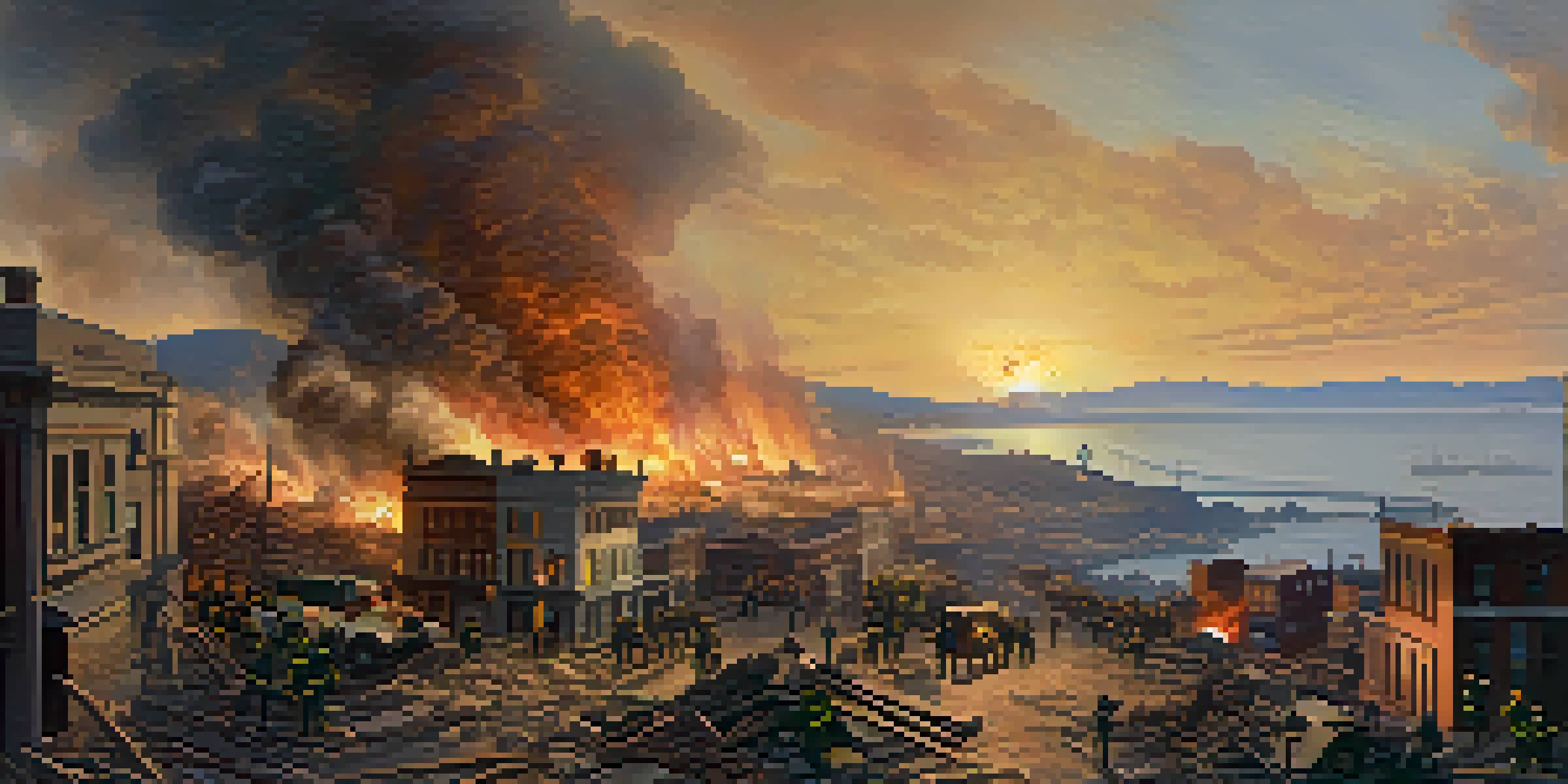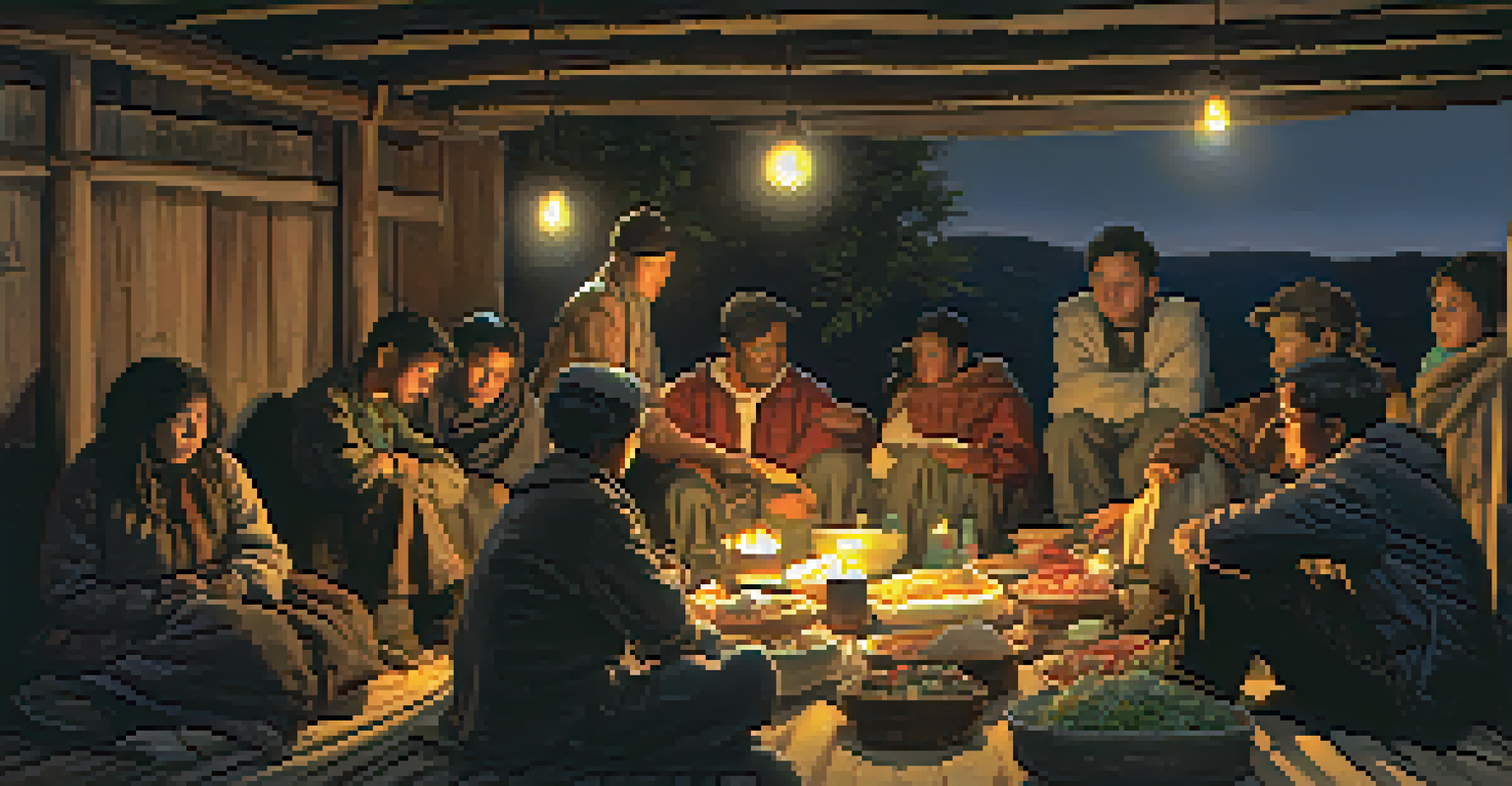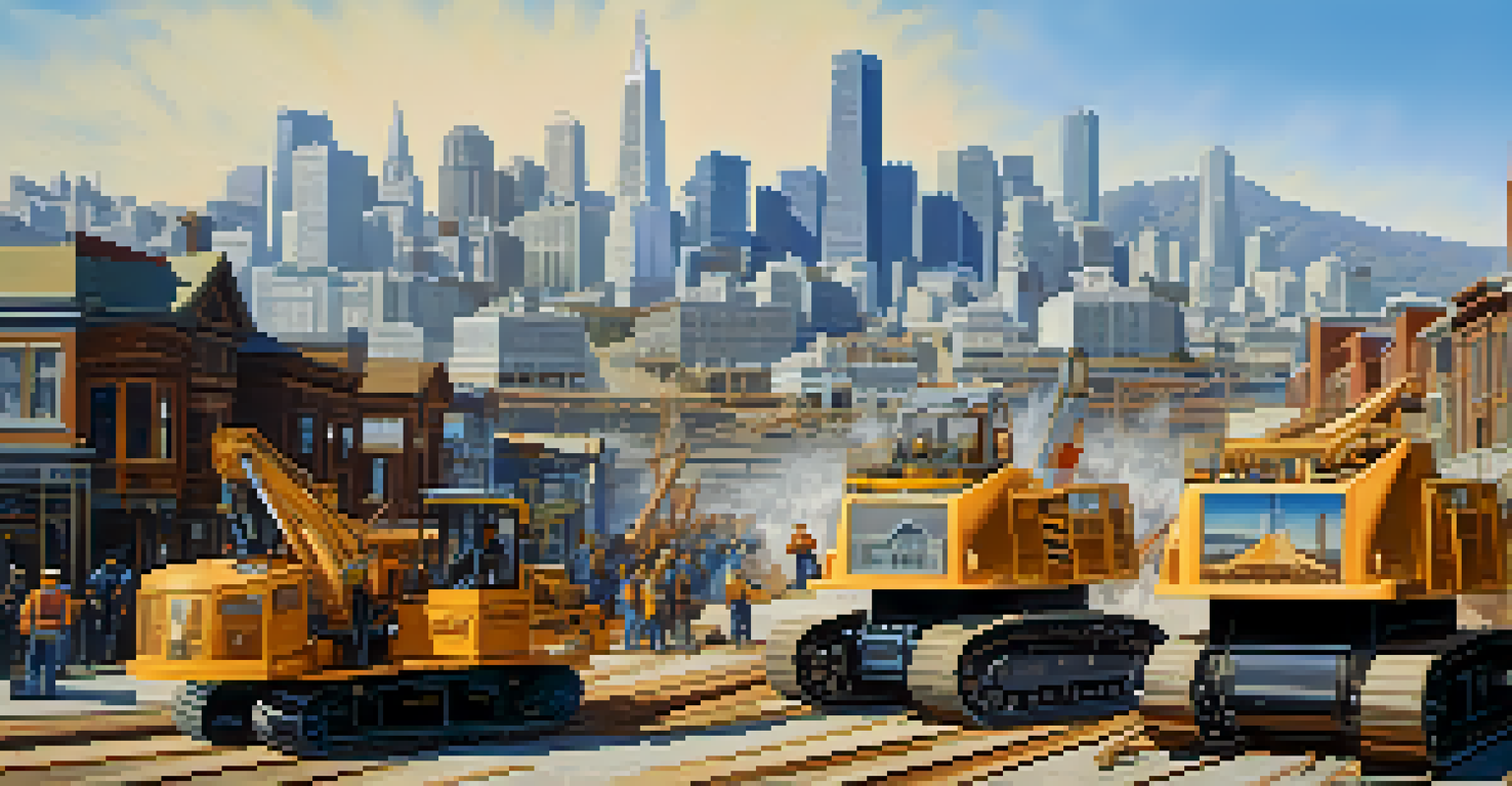The 1906 Earthquake: A Catastrophic Turning Point in History

The Devastation of the 1906 Earthquake
On April 18, 1906, a massive earthquake struck San Francisco, registering a magnitude of 7.9. It lasted for about 42 seconds, but its effects were catastrophic, leveling thousands of buildings and igniting fires that consumed entire neighborhoods. The destruction was so extensive that it’s estimated over 28,000 buildings were destroyed, leaving around 250,000 residents homeless.
The only thing we have to fear is fear itself.
The sheer scale of devastation was unprecedented for the time, shocking both locals and the world. Streets were reduced to rubble, and the iconic skyline vanished almost overnight. For many who lived through it, the experience was surreal, as they watched their homes and businesses crumble before their eyes.
In the aftermath, the city was a scene of chaos and confusion. Emergency services were overwhelmed, and communities banded together to help one another, showcasing the resilience of the human spirit amidst tragedy. This disaster not only changed the landscape of San Francisco but also the lives of its residents forever.
Immediate Aftermath and Response
In the immediate aftermath of the earthquake, the city's infrastructure was in shambles. Firefighters struggled to control the fires that broke out across the city, hampered by broken water mains. The response was hampered by the sheer scale of destruction, and many emergency responders were unable to reach those in need.

The federal government quickly stepped in, declaring the area a disaster zone. Relief efforts were organized, bringing in supplies and assistance from across the country. However, the sheer volume of devastation meant that recovery would take much longer than anticipated.
Devastation and Community Resilience
The 1906 earthquake devastated San Francisco, yet the community came together to support one another in the face of overwhelming destruction.
Local organizations and volunteers played a crucial role in the recovery process. They set up makeshift shelters and provided food and medical care, showcasing the importance of community support during crises. This collective effort laid the groundwork for rebuilding the city and restoring hope to its residents.
Long-term Impact on San Francisco
The 1906 earthquake fundamentally changed the landscape of San Francisco. As buildings were rebuilt, new architectural styles emerged, incorporating more modern techniques and materials. This shift not only transformed the city's skyline but also improved its resilience against future disasters.
In the middle of difficulty lies opportunity.
Urban planning took on a new significance, as city officials recognized the need for better infrastructure. Streets were widened, and fire safety codes were implemented, ensuring that the city would be better prepared for any future emergencies. The catastrophe served as a wake-up call for cities across the country to reevaluate their own disaster preparedness.
Moreover, the earthquake influenced a cultural shift in how communities viewed disaster response. The importance of preparedness and resilience became a focal point in public discourse, leading to a more proactive approach to emergency management. San Francisco emerged from the disaster stronger and more united, setting an example for future generations.
Cultural Shifts and Social Changes
The earthquake and its aftermath sparked significant cultural shifts in San Francisco and beyond. The challenges faced by the city brought diverse communities together, fostering a spirit of solidarity and cooperation. This was particularly important in a city known for its rich tapestry of cultures, as individuals banded together to support one another.
The event also catalyzed social change, highlighting issues of inequality and access to resources. The disaster disproportionately affected low-income communities, prompting discussions about social justice and the need for equitable rebuilding efforts. Activism grew in response, as residents sought to ensure that the voices of all communities were heard in the recovery process.
Long-term Changes in Urban Planning
In the aftermath of the earthquake, San Francisco implemented new building codes and urban planning strategies to enhance disaster preparedness.
Art and literature also flourished in the wake of the earthquake, with many artists and writers drawing inspiration from the resilience shown by the city’s inhabitants. This creative response not only helped process the trauma of the event but also celebrated the enduring spirit of San Francisco, shaping its identity for years to come.
Scientific Advancements in Earthquake Research
The 1906 earthquake marked a turning point in the field of seismology. Scientists began to study the event in depth, seeking to understand the causes and effects of seismic activity. This led to the establishment of better monitoring systems and the development of techniques to measure earthquake magnitude and intensity.
The findings from the 1906 event also prompted researchers to explore the relationship between earthquakes and fault lines. The San Andreas Fault, in particular, became a focal point for study, as scientists sought to understand its behavior and potential for future quakes. This research has continued to shape our understanding of tectonic activity to this day.
As a result, the lessons learned from the 1906 earthquake have significantly influenced building codes and safety regulations across the globe. Today, cities in earthquake-prone areas implement strict standards to minimize damage and protect lives, demonstrating the long-lasting impact of this tragic event on our understanding of natural disasters.
Economic Consequences and Recovery Efforts
The economic toll of the 1906 earthquake was staggering, with estimates of damages reaching into the billions when adjusted for inflation. Businesses were destroyed, and the local economy was brought to its knees, leading to widespread unemployment and financial instability. The immediate aftermath saw a struggle to restore commerce and trade in the city.
Recovery efforts were not just about rebuilding physical structures; they also involved revitalizing the economy. Local leaders worked tirelessly to attract businesses back to the area, offering incentives and support to help them re-establish themselves. This collaborative approach proved essential for San Francisco's recovery, demonstrating the importance of community and commerce.
Cultural and Scientific Impact
The disaster not only sparked social changes and community solidarity but also advanced scientific research in seismology, influencing global building standards.
Over time, the city's economy rebounded, and San Francisco became a hub for innovation and entrepreneurship. This resilience not only aided in the physical reconstruction of the city but also fostered a spirit of determination that would define San Francisco for decades to come.
Legacy and Commemoration of the Earthquake
More than a century later, the legacy of the 1906 earthquake continues to resonate in San Francisco. The event is commemorated annually, with various observances and educational programs designed to honor those who lost their lives and recognize the resilience of survivors. These commemorations serve as reminders of the city's history and the lessons learned from it.
Monuments and memorials have been established throughout the city, celebrating the courage and strength of the community during such a challenging time. These sites not only offer a place for reflection but also educate visitors about the earthquake's impact, ensuring that future generations understand its significance.

The ongoing interest in the 1906 earthquake has also spurred discussions on disaster preparedness in contemporary society. As climate change and urban development pose new challenges, the lessons from this historical event remain relevant, emphasizing the need for ongoing vigilance and resilience in the face of potential disasters.